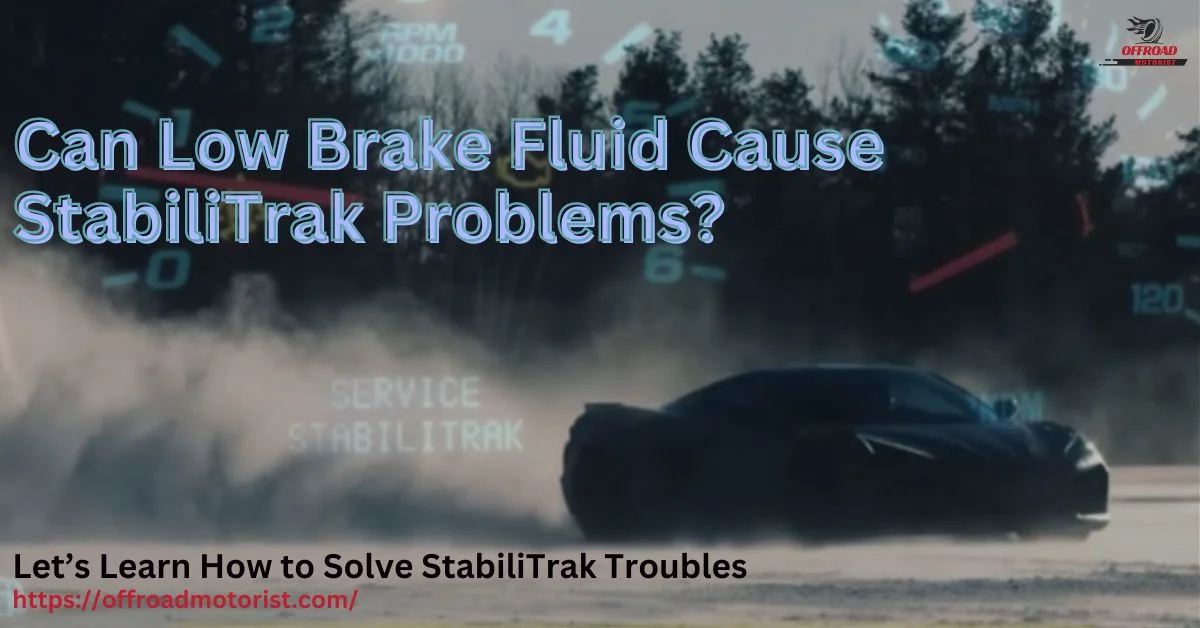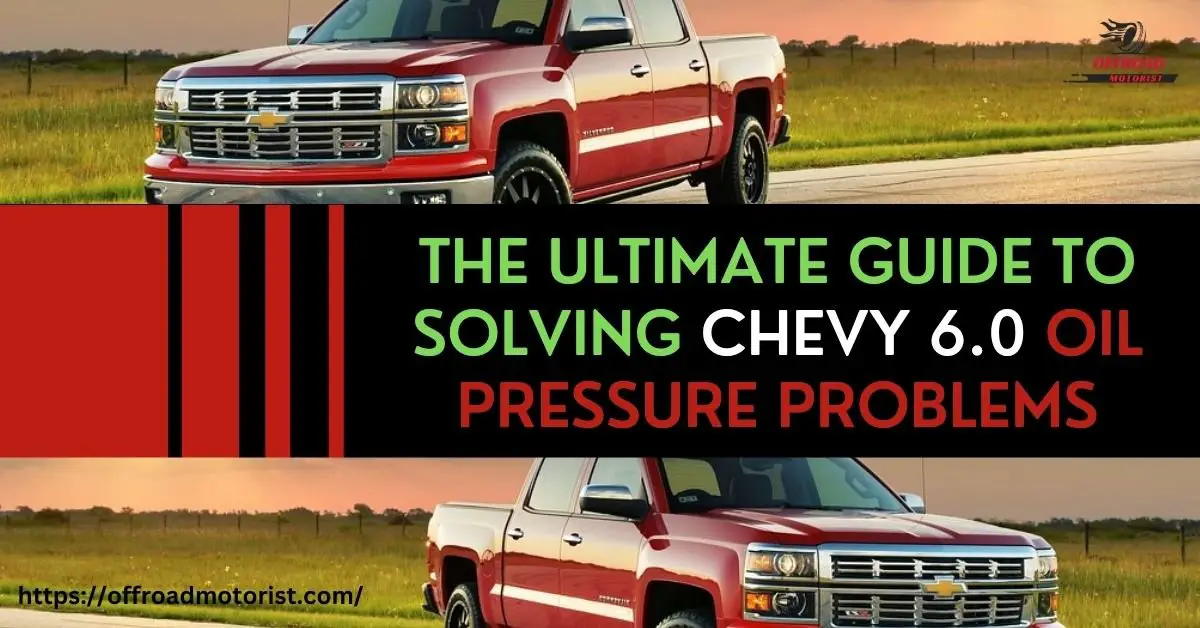Why Your Car Wobbles When Hitting Bumps and How to Fix It
If you’ve ever experienced your car wobbling or vibrating when you hit bumps on the road, you know how unsettling it can be. Not only is it uncomfortable, but it can also be dangerous if left unchecked.
There are several potential causes for a car wobbling when hitting bumps, and it’s essential to identify and address the issue promptly to ensure your safety and the longevity of your vehicle.
In this post, we’ll explore some of the most common reasons for a car wobbling when hitting bumps and provide actionable tips on fixing the problem. Let’s learn how to keep your car running smoothly on the road.
Reasons Why Your Car Wobbles When Hitting Bumps
There are several possible reasons why your car may wobble when hitting bumps. Some of the most common causes include:
01. Suspension Problems:
Your car’s suspension system is responsible for keeping your car stable and absorbing any shocks caused by bumps in the road. If the suspension is worn out or damaged, it can lead to a wobbling sensation.
Signs of a suspension problem include a bouncy or uncomfortable ride, uneven tire wear, and a vibrating steering wheel.
02. Tire Problems:
Damaged, underinflated, or unevenly worn tires can cause your car to wobble when hitting bumps. Signs of tire problems include visible damage to the tires, a loss of air pressure, or uneven tread wear.
03. Steering Problems:
A problem with your steering system, such as worn-out tie rod ends, ball joints, or damaged steering gear, can also cause your car to wobble when hitting bumps.
If you feel vibrations coming from the steering wheel, there may be an issue with the steering system in your vehicle.
04. Wheel Alignment:
Improper wheel alignment can cause your car to pull to one side, vibrate, and wobble when hitting bumps. Signs of improper wheel alignment include uneven tire wear, a crooked steering wheel, or a vehicle that veers to one side.
05. Brake Issues:
Worn brake rotors, calipers, or pads can cause your car to vibrate and wobble when braking or hitting bumps on the road. Signs of brake issues include squeaking or grinding noises when braking, a vibrating brake pedal, or a loss of braking power.
Symptoms of Wobbling When Hitting Bumps
When your car wobbles or vibrates when hitting bumps, it can be an unsettling experience affecting your comfort and safety on the road. Some of the most common symptoms of wobbling when hitting bumps include:
01. Vibration or shaking in the steering wheel:
One common symptom of car wobbling is feeling a vibration or shaking in the steering wheel. Problems with your vehicle’s suspension, which absorbs shocks and keeps your vehicle stable on the road, are common causes.
Your vehicle’s suspension may become worn out over time, which may cause the car to jiggle or shake when traveling over bumps.
02. Uneven tire wear:
Another symptom of car wobbling is uneven tire wear. If your tires are wearing down unevenly, it can cause your car to wobble or shake when driving.
Because of the uneven tread distribution, your vehicle’s handling may suffer and become unstable over bumps.
03. Squeaking or creaking noises:
If you hear strange noises from your car when hitting bumps, such as squeaking or creaking, it can be a sign of a suspension problem. When driving over bumps or rough terrain, your car may make strange noises if its suspension is damaged or worn.
04. Difficulty steering:
Difficult steering is another symptom of car wobbling, as a worn or damaged suspension system can affect your car’s steering. You may find it harder to steer your vehicle, and it may respond slower or more accurately.
05. Poor handling:
Poor handling is also a sign of car wobbling when hitting bumps. Your car may feel less stable than usual and be harder to control when driving. If your vehicle is shaky or bouncing, it may be because your suspension parts are worn or broken.
06. Bouncing or swaying:
Finally, if your car bounces or sways excessively after hitting a bump, it could be a sign of worn-out shocks or struts. When these parts wear out, your vehicle loses its ability to control motion and stability, making it more prone to bouncing and swaying than usual.
If you experience these symptoms, a mechanic should inspect your vehicle to diagnose and fix the underlying issue.
How to Fix Wobbling When Hitting Bumps
The solution for fixing wobbling when hitting bumps depends on the underlying cause of the problem. Here are some steps you can take to resolve the issue:
01. Inspect your tires:
Perform a tire pressure check and ensure your tires have the appropriate amount of air in them. Also, inspect your tires for signs of damage, such as bulges, cracks, or punctures. Uneven tire wear can indicate suspension issues, so ensure your tires wear evenly.
2. Examine the suspension system:
Your car’s suspension system is responsible for absorbing the shock of bumps and keeping your car stable on the road. Have a qualified mechanic check out your suspension system if there is a problem.
They can identify any issues with your shock absorbers, struts, springs, or bushings and fix or replace them as required.
03. Inspect your steering system:
A faulty steering system can also cause wobbling when hitting bumps. Have your steering system inspected by a mechanic to ensure it functions properly.
They can check for any issues with the steering column, tie rods, or other components affecting steering performance.
04. Get a wheel alignment:
An improper wheel alignment can cause your car to pull to one side or cause wobbling when hitting bumps. Have your wheels aligned by a qualified technician to ensure they are correctly aligned and balanced.
05. Replace worn-out tires:
When you go over bumps, your vehicle may shake because of worn-out tires, which punctures can cause. Have your tires replaced with new ones to improve your car’s stability and handling.
You can fix the wobbling in your vehicle when hitting bumps and ensure that it is safe and comfortable to drive by following these steps.
Preventing Future Wobbling When Hitting Bumps
Regular maintenance and inspections can help you catch any issues before they become significant problems, and safe driving practices can help extend the life of your car’s suspension system and tires.
To prevent future wobbling when hitting bumps, you can take the following steps:
01. Maintain your suspension system:
Regular maintenance of your suspension system can help prevent wobbling when hitting bumps. Have your suspension system inspected by a qualified mechanic regularly, and have any worn or damaged components repaired or replaced as necessary.
02. Inspect your tires regularly:
Check your tire pressure and inspect your tires for signs of damage or uneven wear. Replace worn-out or damaged tires as soon as possible.
03. Drive carefully:
Avoid hitting bumps or potholes at high speeds, as this can cause damage to your suspension system or tires. Drive at a safe and reasonable speed, and take care to avoid rough roads and uneven terrain.
04. Get regular wheel alignments:
Regular wheel alignments can help prevent wobbling when hitting bumps by ensuring your wheels are correctly aligned and balanced. Have your wheels aligned by a qualified technician at regular intervals or whenever you notice any steering issues.
05. Avoid overloading your car:
Overloading your car with heavy cargo or passengers can strain your suspension system, causing it to wear out faster. Avoid overloading your vehicle and ensure you are within the manufacturer’s recommended weight limit.
FAQs on “Car Wobbles When Hitting Bumps”
Now that we have covered some of the most commonly asked questions about the Chevy Death Wobble, let’s dive deeper into this issue and explore some underlying causes and potential solutions.
What is the Chevy Death Wobble, and how can it be fixed?
The Chevy Death Wobble is a term used to describe a violent shaking or vibration that occurs in the steering wheel and suspension of certain Chevy vehicles, particularly the Chevy Silverado and GMC Sierra.
Shaking usually happens at high speeds or when hitting bumps or uneven surfaces on the road.
It is essential to diagnose the underlying cause of the problem, which can range from worn-out suspension components to unbalanced or improperly installed wheels.
Once the cause is determined, you can take steps to fix it, such as replacing faulty parts or realigning the wheels.
Is the Chevy Shake a similar problem to the Death Wobble?
Yes, the Chevy Shake is similar to the Chevy Death Wobble and refers to a vibration or shaking in the steering wheel and suspension of certain Chevy vehicles, including the Silverado and Sierra.
There are several potential causes for the Chevy Shake, including worn-out suspension components, unbalanced or improperly installed wheels, or both.
My car wobbles when hitting bumps or uneven surfaces. Is this the same as the Chevy Death Wobble?
Your car may be experiencing the same issue as the Chevy Death Wobble, particularly if you are driving a Chevy Silverado or GMC Sierra.
However, wobbling when hitting bumps or uneven surfaces can also be caused by various other issues, such as worn-out shocks or struts, loose or damaged suspension components, or unbalanced or improperly installed wheels.
It is crucial to diagnose the underlying cause of the problem to fix it properly.
When I hit a bump, my car swerved. Is this dangerous?
Yes, swerving or veering when hitting bumps or uneven surfaces can be very dangerous, as it can cause you to lose control of your vehicle and potentially lead to an accident. Diagnose and fix the issue as soon as possible.
Can a bad alignment cause the Chevy Death Wobble?
Yes, a poor alignment can cause instability and shake, resulting in uneven wear on the tires and suspension parts, which causes the Chevy Death Wobble.
However, poor alignment is not the only cause of the Chevy Death Wobble, so it is crucial to investigate and diagnose any other potential causes.
Is the Chevy Death Wobble after hitting a bump a common issue?
Yes, the Chevy Death Wobble after hitting a bump is a common issue among Chevy Silverado and GMC Sierra owners.
Worn-out suspension components, unbalanced wheels usually bring it on, or improperly mounted or balanced wheels.
Does the warranty on my car cover the Chevy Death Wobble?
The age and mileage of your car, the details of your warranty, and whether the problem is considered a manufacturing defect or the result of normal wear and tear will all affect whether your car’s warranty covers the Chevy Death Wobble.
You should contact your dealership or the manufacturer if you are experiencing the Chevy Death Wobble, and a warranty still covers your car to discover the hidden problem.
Final Thoughts on “Car Wobbles When Hitting Bumps”
Understanding the symptoms and taking the necessary steps to address the underlying cause can fix and prevent recurring problems.
Regular maintenance, such as tire and suspension system checks, wheel alignments, and safe driving practices, can help prevent wobbling when hitting bumps.
Additionally, it is essential to seek assistance from a qualified mechanic if you are unsure about the cause of the problem or do not feel confident performing repairs yourself.

![Mastering Headlights| Low Beam vs High Beam [Symbols, Functions, and Optimal Usage] Low Beam vs High Beam](https://offroadmotorist.com/wp-content/uploads/2023/03/Low-Beam-vs-High-Beam-150x150.jpg)
![Chevy Transfer Case Interchange Chart [Everything you need to Know] chevy transfer case interchange chart](https://offroadmotorist.com/wp-content/uploads/2023/03/chevy-transfer-case-interchange-chart-150x150.jpg)

![Normal Transmission Temperature Silverado 1500 [Every Thing You Need to Know] Normal Transmission Temperature Silverado 1500](https://offroadmotorist.com/wp-content/uploads/2023/03/Normal-Transmission-Temperature-Silverado-1500-150x150.jpg)

![Silverado Feels Like Going Over Rumble Strips? [Common Issues Explained] silverado feels like going over rumble strips](https://offroadmotorist.com/wp-content/uploads/2023/03/silverado-feels-like-going-over-rumble-strips-150x150.jpg)


![Normal Transmission Temperature Silverado 1500 [Every Thing You Need to Know]](https://offroadmotorist.com/wp-content/uploads/2023/03/Normal-Transmission-Temperature-Silverado-1500.jpg)
![How to Reset Throttle Position Sensor on Chevy Silverado [Everything You Need to Know]](https://offroadmotorist.com/wp-content/uploads/2023/02/How-to-Reset-Throttle-Position-Sensor.jpg)
![How To Turn Off Automatic Headlights On Silverado [A Step-By-Step Guide: 04 Easy Steps]](https://offroadmotorist.com/wp-content/uploads/2023/04/how-to-turn-off-automatic-headlights-on-silverado.jpg)
